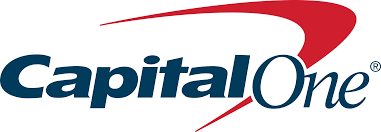
To execute their everyday operations properly, all small and medium businesses require sufficient operating capital. When it comes to taking out a loan, businesses have two options: First is the long-term loans (small company loans, lines of credit, etc.), and second is the short-term flexible loans (like cash credit and overdraft)
Many businesspeople mistakenly believe that cash credit (CC) and overdraft (OD) are the same thing. While these two short-term loan options look to be identical, they are two entirely different financial solutions that cater to different needs. Let’s take a closer look at the distinctions between CC and OD in this blog post, so you can figure out which is best for your business.
What is cash credit?
Cash credit is a sort of short-term loan offered to businesses to help them manage their working capital needs. The money is credited to a different account that is neither current nor savings.
Key points:
- You are only allowed to utilize the funds for business purposes.
- To receive the money from the cash credit, you’ll need to open a new bank account.
- The number of transactions and checkbooks issued for the cash credit account is unlimited.
- Borrowers must present the profit and loss statement, balance sheet, GST filing, and other documentation once per quarter and annually.
- To obtain cash credit loans, most lenders demand the borrower to provide collateral.
- The loan can be repaid every day or weekly, depending on the lender’s terms and conditions.
What is an overdraft?
Overdraft is a facility given by banks to a limited number of consumers. It permits current account customers to withdraw more money than is available from their bank account. You can use this method to issue checks even if your account balance is insufficient.
Key points:
- Only reputable customers are eligible for an overdraft. Customers that have a good relationship with the bank and are in excellent financial standing are eligible for this service.
- This facility is charged by the bank. The amount of fees charged is determined by the additional amount you withdraw from your account and varies by bank.
Similarities between Cash Credit and Overdraft
- The lender’s Cash Credit and Overdraft interest rate are based on the amount of money used, not on the sanctioned amount or limit.
- The cash credit limit and the amount of the overdraft are repayable on demand.
- Both of these financial tools are offered as collateral for existing assets.
- In both circumstances, the loan limit and amount sanctioned remain set, and extra funds cannot be withdrawn.
- Amounts in excess of the sanctioned or available cash limit can be withdrawn.
Difference between Cash Credit and Overdraft
Cash Credit
- When compared to an overdraft, the interest rate is cheaper.
- On the hypothecation of stocks and goods, a cash credit loan can be obtained.
- Cash Credit does not deteriorate over time.
- A new account must be opened in order to receive Cash Credit.
- Cash Credit should only be used for business reasons, and the loan amount is determined by the stock and inventory volume.
- Cash credit loans are available for a minimum of one year.
- Individuals, retailers, traders, manufacturers, distributors, businesses, partnerships, sole proprietorships, LLPs, and other entities can apply for cash credit loans.
- Cash credit is granted based on the company’s success and the state of the market.
Overdraft
- The interest rate is higher in comparison.
- An overdraft can be obtained based on credit history, bank relationships, and investments such as FDs, insurance policies, and so on.
- Overdrafts can be utilized for a variety of purposes, including corporate needs.
- The amount of the loan is determined by financial statements and security deposits.
- In the event of an overdraft, there is a monthly reduction.
- On the applicant’s existing account, an overdraft facility is available (account holder)
- Overdrafts are available for a month or quarter at a time, with a maximum of one year.
- Only account holders of the relevant bank are eligible for an overdraft.
- The approval of an overdraft is based on financial data and credit history.
Endnote
Hopefully, the blog gives you the valuable insights needed to choose between cash credit and bank overdraft.


























